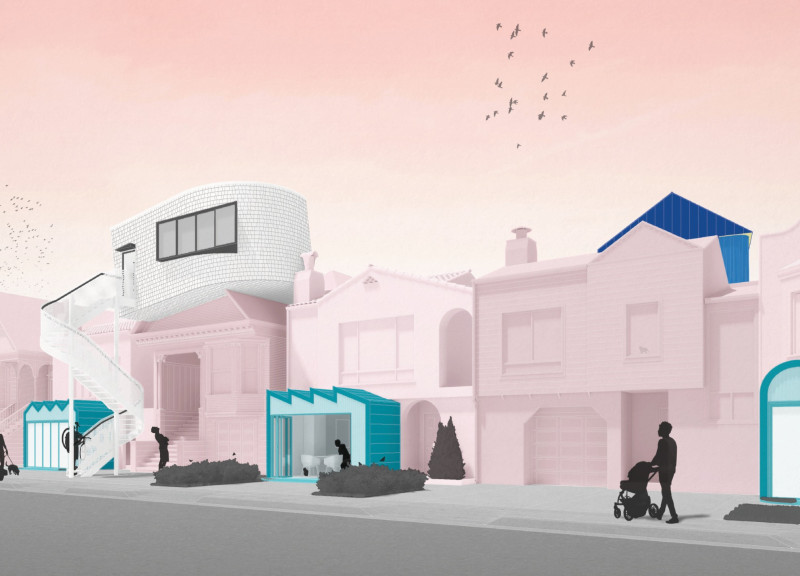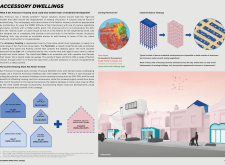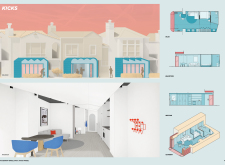5 key facts about this project
The design of Accessory Dwelling Units (ADUs) in San Francisco addresses the enduring issue of housing density in the city. These small residential units are meant to fit into existing neighborhoods, providing additional living spaces without the complications of larger developments. The aim is to change the common perception of ADUs, showcasing their value as attractive living options while incorporating influences from contemporary cultural trends.
Typologies
Three main typologies define the design: The Fascinator, The Cap, and The Kicks.
The Fascinator is a street-facing walk-up with an interesting floor layout and a sleeping space that seems to float above the structure. This design creates a welcoming presence on the street, making connections between the home and the outside world more engaging.
The Cap unit takes a different approach, focusing on privacy. Positioned toward the backyard, it consists of two distinct volumes that create spaces for private living and communal gathering. This layout encourages neighborly interactions while maintaining personal privacy.
The Kicks unit brings accessibility to the forefront. Located at street level, it offers a living space that integrates well with a typical single-car garage. This innovative design allows for effective use of existing structures, adapting them for modern needs.
The combination of these typologies reflects a careful approach to the challenges of housing in San Francisco. By introducing these units, the potential exists to increase the city's housing supply by 25% to 30%. This goal aims to provide a meaningful response to the ongoing housing shortage without altering the character of the neighborhoods.
Each typology clearly communicates the design intent. Attention to spatial relationships and integration within the urban landscape is evident. The focus is on the individual styles of each unit, revealing how ADUs can fit into contemporary living. These distinct forms not only enrich the area but also promote community interaction, enhancing the overall experience of urban life.





















































